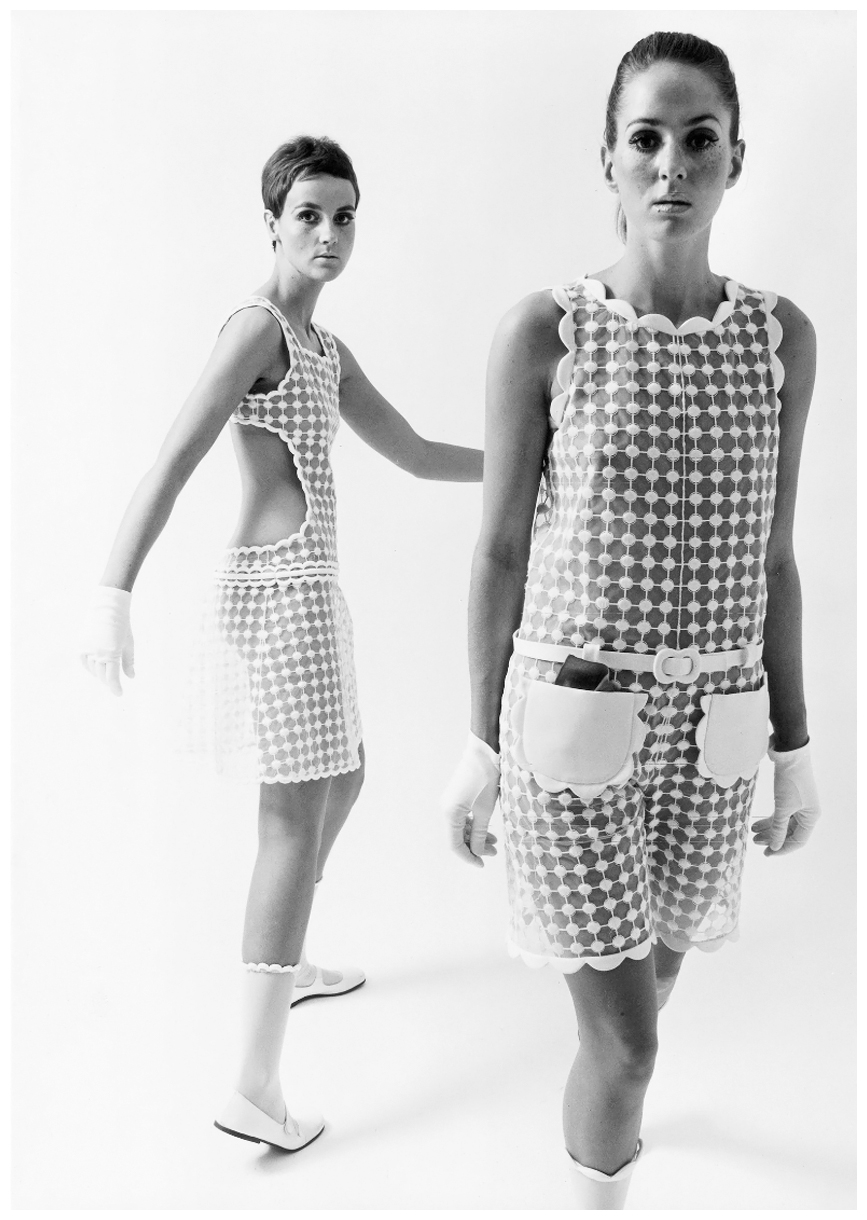
Not always the most wearable fashion, Space Age couture often served to make a statement, as can be seen in Paco Rabanne’s 1966 line entitled 12 Unwearable Dresses in Contemporary Materials. André Courrèges introduced the Space Look in 1964, which featured geometrical designs made from PVC and monochromatic white ensembles with strategically placed cutouts, complete with helmets meant to echo the design of those of the celebrated astronauts. With the new boost in the glorification of the new technologies echoing that of the the Machine Age of early 20th century, fashion designers displayed a positivity toward the recent improvements made in technology and incorporated the spirit of this new era into their designs. Though space travel was hardly an innovative idea (one look at George Méliès’s 1902 film A Trip to the Moon will tell you differently), all at once it seemed accessible, and as politics reached new heights, the arts scene was quick to follow. With the Cold War in full swing, the beginning of the 60s carried with it a strong futuristic spirit people wanted to reach for the stars, and for the first time in history this was not just a possibility, but a certainty. Cardin, who undoubtedly went alongside this path with an almost magical ability to see into the future, states: “The clothes I prefer were invented for a life that does not exist yet”, in an interview about the collection that had fascinated, amazed and marked the evolution of taste.The 1920s had the flapper post-WWII saw the rise of Christian Dior’s New Look, but when it comes to novelty, it seems that the 1960s win the ‘otherworldly’ prize with the emerge of Space Age fashion. More precisely, these fashion astronauts – then copied all over the world – had taken off even before the man went to the moon. Volumes designed with ruler and compass, geometric cuts in white or silver fabrics, flash syntonic to Dan Flavin‘s neon, are intended to make women free in their movements, modern in thought, perhaps astronauts. It is during these years that the Space Age begins, a great creative era shared by Pierre Cardin, Paco Rabanne and André Courrèges. Obviously, this fashion reached the cinema too: a super sexy Jane Fonda in the cult Barbarella, dated 1968, wore daring spacial overalls, designed for her by Paco Rabanne, another forefather of the period that – due to the use of materials such as metal, aluminum, plastic, plexiglass and even fiber optics – aroused the indignation of Coco Chanel, who described it as “the metallurgy of fashion.” Other elements, such as the enthusiasm for the nascent missile industry and the first sighting of a UFO in 1947 made the science fiction a social phenomenon.Įven the designer Pierre Cardin got fascinated by this style, and presented a collection with space helmets, leather shorts and dresses in transparent glossy vinyl. The Second World War was over, and to forget the horrors of the past, people started to imagine a different future. Sci-fi was born in the early twentieth century, but the phenomenon exploded in the fifties, in the United States.

But often suggestions also came from the fashion and the catwalks, to demonstrate the fusion between these two art forms. Sci-fi is not only a literary genre, or just part of cinematography. Its imagery interprets a vision that transcends the boundaries of genders and slips between literature, film, fashion and that continues, year after year, to be presented on the catwalk in many and ever-changing ways.įuturistic visions of the world, fantastic technological scenarios or alternative realities set in the past, the present and the future have always been the central themes of science fiction.


 0 kommentar(er)
0 kommentar(er)
